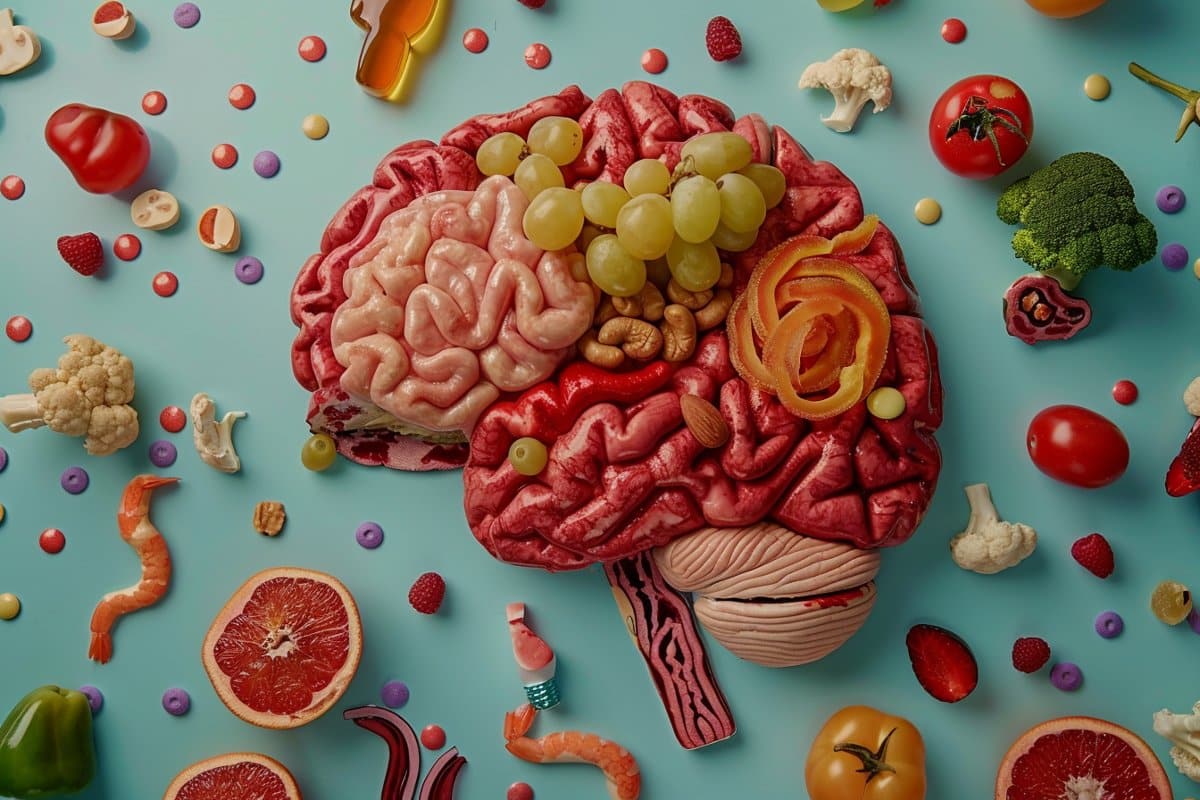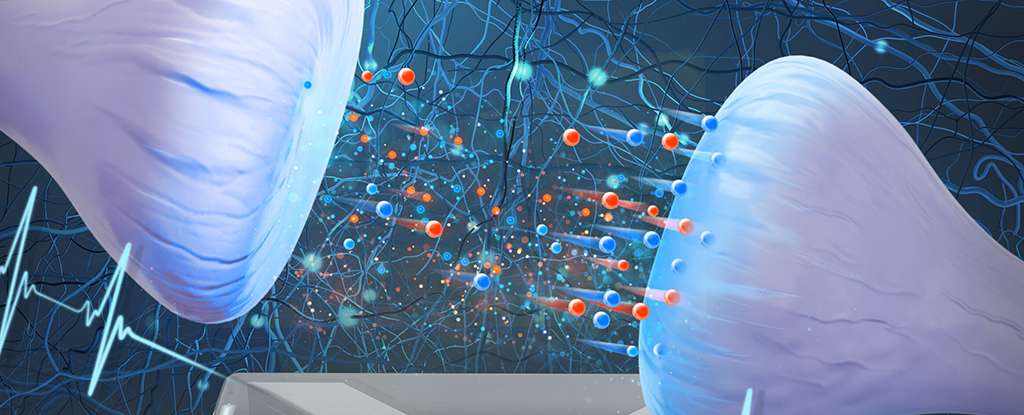Summary: Researchers identified a brain circuit in mice that drives them to seek food even when not hungry, focusing on a specific group of cells in the brainstem’s periaqueductal gray (PAG) area. This discovery highlights how stimulating these cells causes mice to prefer high-calorie foods and engage in food-seeking behaviors, regardless of hunger.
The study suggests that humans possess similar cells, offering potential new insights into eating disorders. By manipulating the activity of these cells, the researchers demonstrated the ability to increase or decrease food-seeking behavior in mice, pointing to possible future treatments for compulsive eating and anorexia in humans.
Key Facts:
- Specific Brain Cells Drive Food Seeking: Researchers found that stimulating vgat PAG cells in mice leads to food-seeking behavior, even in the absence of hunger, highlighting a distinction between the craving for high-calorie foods and actual hunger.
- Implications for Eating Disorders: The presence of similar cells in humans suggests that overactivity or underactivity in this brain circuit could contribute to disorders like compulsive eating and anorexia, making it a potential target for treatment.
- Compulsive Eating of High-Calorie Foods: Mice activated by these cells demonstrated a preference for fatty and sugary foods over healthier options, indicating the circuit’s role in the craving for highly rewarding food.
Source: UCLA
People who find themselves rummaging around in the refrigerator for a snack not long after they’ve eaten a filling meal might have overactive food-seeking neurons, not an overactive appetite.
UCLA psychologists have discovered a circuit in the brain of mice that makes them crave food and seek it out, even when they are not hungry. When stimulated, this cluster of cells propels mice to forage vigorously and to prefer fatty and pleasurable foods like chocolate over healthier foods like carrots.
People possess the same kinds of cells, and if confirmed in humans, the finding could offer new ways of understanding eating disorders.
The report, published in the journal Nature Communications, is the first to find cells dedicated to food-seeking in a part of the mouse brainstem usually associated with panic, but not with feeding.
“This region we’re studying is called the periaqueductal gray (PAG), and it is in the brainstem, which is very old in evolutionary history and because of that, it is functionally similar between humans and mice,” said corresponding author Avishek Adhikari, a UCLA associate professor of psychology.
“Although our findings were a surprise, it makes sense that food-seeking would be rooted in such an ancient part of the brain, since foraging is something all animals need to do.”
Adhikari studies how fear and anxiety help animals assess risks and minimize exposure to threats, and his group made the discovery while trying to learn how this particular spot was involved in fear.
“Activation of the entire PAG region causes a dramatic panic response in both mice and humans. But when we selectively stimulated only this specific cluster of PAG neurons called vgat PAG cells, they did not alter fear, and instead caused foraging and feeding,” Adhikari said.
The researchers injected into mouse brains a virus genetically engineered to make the brain cells produce a light-sensitive protein. When a laser shines on the cells via a fiber-optic implant, the new protein translates that light to electrical neural activity in the cells. A miniature microscope, developed at UCLA and affixed to the mouse’s head, recorded the neural activity of cells.
When stimulated with laser light, the vgat PAG cells fired and kicked the mouse into hot pursuit of live crickets and non-prey food, even if it had just eaten a large meal. The stimulation also induced the mouse to follow moving objects that were not food — like ping pong balls, although it did not try to eat them — and it also prompted the mouse to confidently explore everything in its enclosure.
“The results suggest the following behavior is related more to wanting than to hunger,” Adhikari said.
“Hunger is aversive, meaning that mice usually avoid feeling hungry if they can. But they seek out activation of these cells, suggesting that the circuit is not causing hunger. Instead, we think this circuit causes the craving of highly rewarding, high-caloric food. These cells can cause the mouse to eat more high-calorie foods even in the absence of hunger.”
Satiated mice with activated vgat PAG cells craved fatty foods so much, they were willing to endure foot shocks to get them, something full mice normally would not do. Conversely, when the researchers injected a virus engineered to produce a protein that dampens the cells’ activity under exposure to light, the mice foraged less, even if they were very hungry.
“Mice show compulsive eating in the presence of aversive direct consequences when this circuit is active, and don’t search for food even if they’re hungry when it’s not active. This circuit can circumvent the normal hunger pressures of how, what and when to eat,” said Fernando Reis, a UCLA postdoctoral researcher who did most of the experiments in the paper and came up with the idea to study compulsive eating.
“We’re doing new experiments based on these findings and learning that these cells induce eating of fatty and sugary foods, but not of vegetables in mice, suggesting this circuit may increase eating of junk food.”
Like mice, humans also possess vgat PAG cells in the brainstem. It could be that if this circuit is overactive in a person, they might feel more rewarded by eating or crave food when not hungry. Conversely, if this circuit is not active enough, they could have less pleasure associated with eating, potentially contributing to anorexia. If found in humans, the food-seeking circuit could become the treatment target for some kinds of eating disorders.
Funding: The research was supported by the National Institute of Mental Health, the Brain & Behavior Research Foundation and the National Science Foundation.
About this hunger and neuroscience research news
Author: Holly Ober
Source: UCLA
Contact: Holly Ober – UCLA
Image: The image is credited to Neuroscience News
Original Research: Open access.
“Control of feeding by a bottom-up midbrain-subthalamic pathway” by Avishek Adhikari, et al. Nature Communications
Abstract
Control of feeding by a bottom-up midbrain-subthalamic pathway
Investigative exploration and foraging leading to food consumption have vital importance, but are not well-understood. Since GABAergic inputs to the lateral and ventrolateral periaqueductal gray (l/vlPAG) control such behaviors, we dissected the role of vgat-expressing GABAergic l/vlPAG cells in exploration, foraging and hunting.
Here, we show that in mice vgat l/vlPAG cells encode approach to food and consumption of both live prey and non-prey foods. The activity of these cells is necessary and sufficient for inducing food-seeking leading to subsequent consumption.
Activation of vgat l/vlPAG cells produces exploratory foraging and compulsive eating without altering defensive behaviors. Moreover, l/vlPAG vgat cells are bidirectionally interconnected to several feeding, exploration and investigation nodes, including the zona incerta. Remarkably, the vgat l/vlPAG projection to the zona incerta bidirectionally controls approach towards food leading to consumption.
These data indicate the PAG is not only a final downstream target of top-down exploration and foraging-related inputs, but that it also influences these behaviors through a bottom-up pathway.

Rachel Carter is a health and wellness expert dedicated to helping readers lead healthier lives. With a background in nutrition, she offers evidence-based advice on fitness, nutrition, and mental well-being.



:max_bytes(150000):strip_icc():focal(1096x226:1098x228)/sandra-doorley-042724-7e157c1be9b04a32bf1f086242046d87.jpg)




